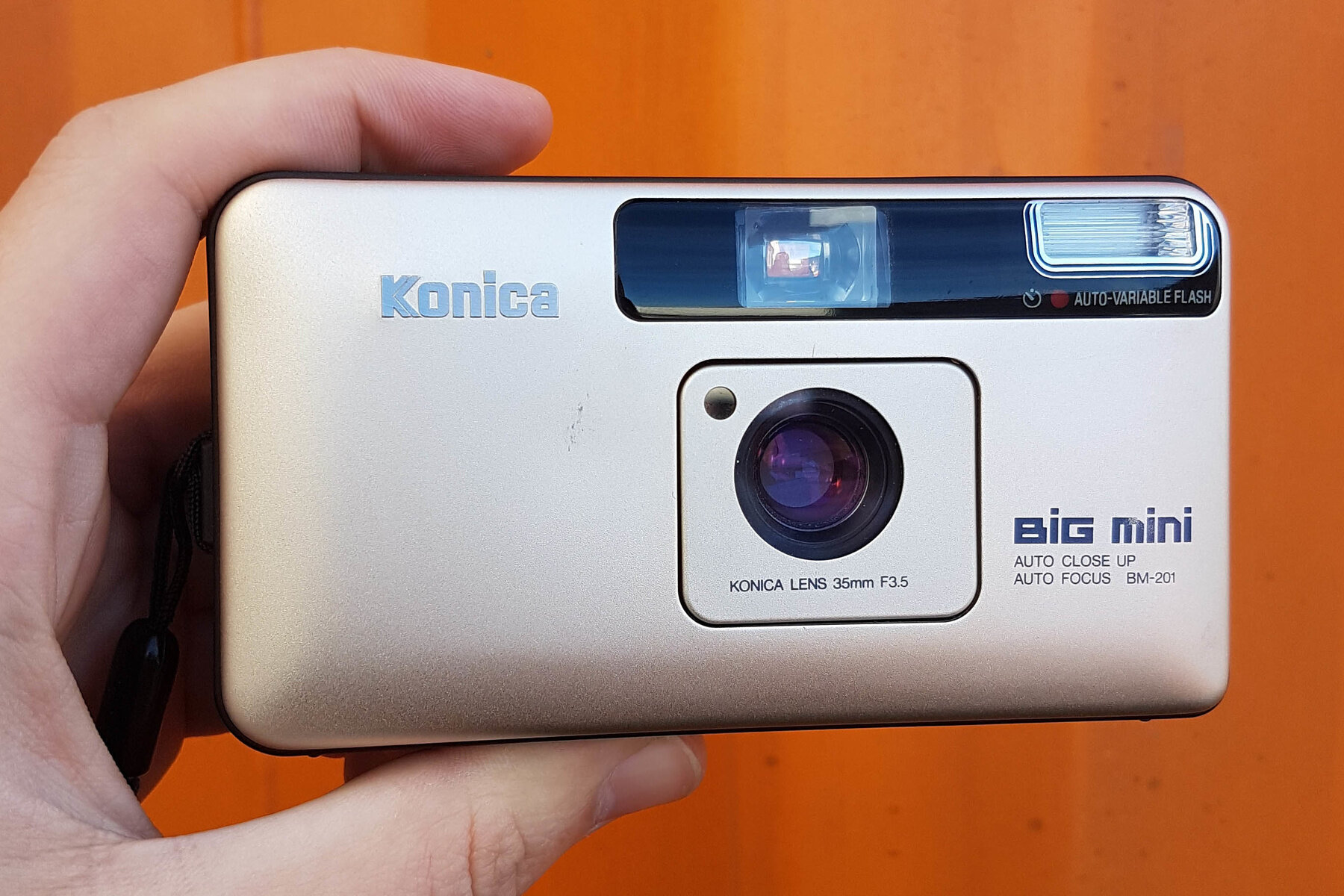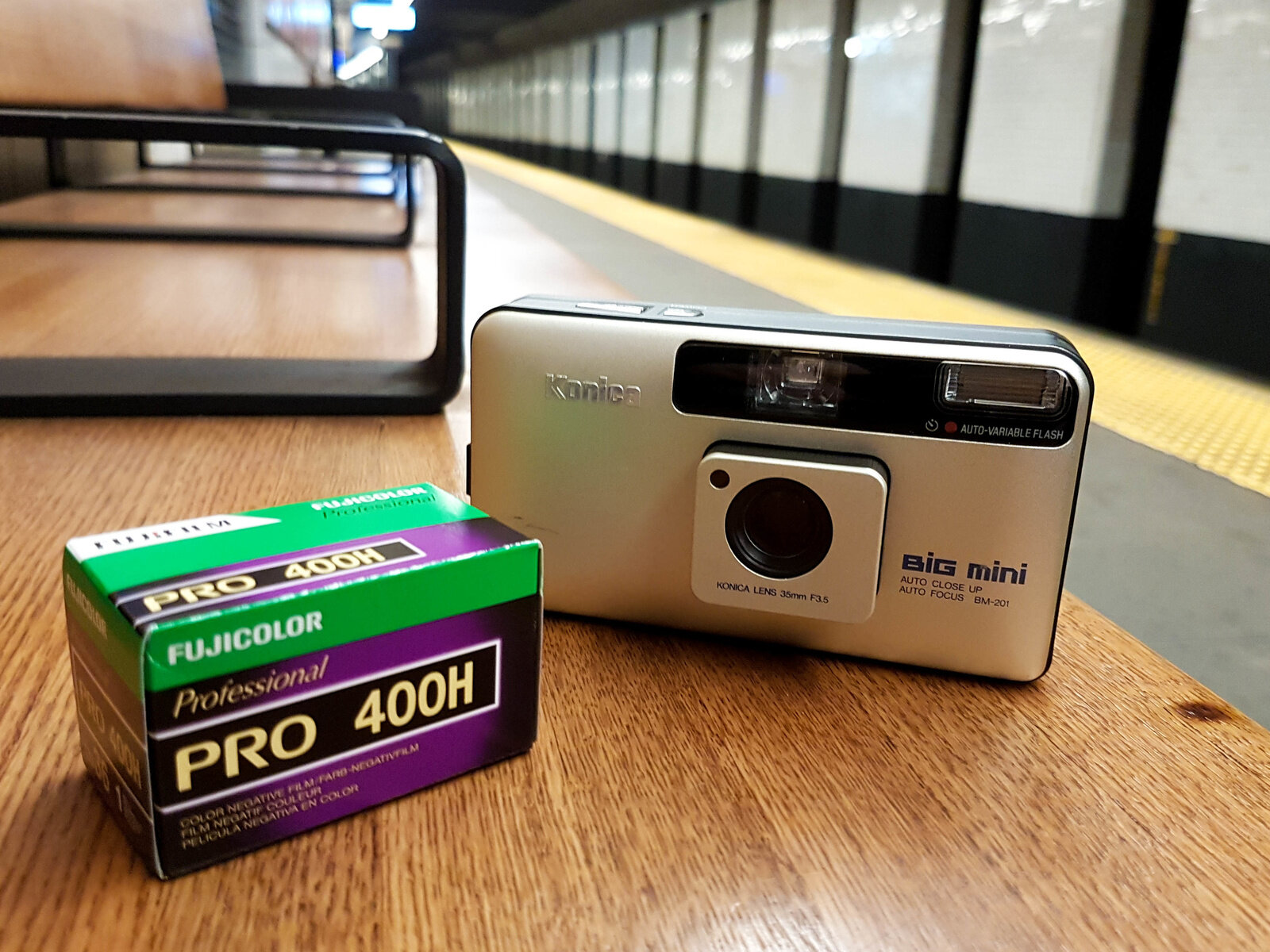Part I: Shooting the Konica Big Mini BM-201 [Review with Sample Shots]
UPDATE (MAY 2021): Three years later, I’ve updated this blog post with more detailed specs, and dozens of sample photos. You can read it here: Part II: Shooting the Konica Big Mini BM-201 [Review with Sample Shots]
I’ve been experimenting with film cameras for a few years now. The first one I ever purchased was the Canon AE-1 back in 2012. It had a standard 50mm f/1.8 lens and came complete with light leaks due to worn away seals in the door. Not that I knew any of that at the time. I was so new to film photography that I was just happy to have a mechanical camera in my hands, no matter the quality of the shots. Thanks, eBay!
Flash forward a few years. I recently traded a Canon FT QL with a Tamron lens for a Konica Big Mini (BM-201). The Canon was a heavy film SLR and the Konica is a compact point-and-shoot. Now, I happen to think that it was a fair trade, though I’m sure someone will argue that I lost the exchange. Not to worry! I’ve wanted a Big Mini for a long time and finally have some developed and scanned shots to share. If you’re here for sample shots, you can skip to the bottom.
How I Used It
Konica Big Mini (BM-201) and a roll of Fuji Pro 400H which I didn’t use for any of the photos below.
The Big Mini is shaped like a bar of soap. It’s very sleek, with power and shutter buttons on top as well as several buttons on the back for mode, timer, and rewind. The buttons, lens, and flash are all flush with the body. The buttons on the back are reeeeally tiny and not very responsive. It often took a few tries to change the mode and I had to get a pin to get the rewind button to work. I generally used the mode button to turn off the flash as I’m not a big fan of it drawing attention on the street. Plus, I rarely shoot at night and indoors. The mode button also allows you to change the EV to over or underexpose the shot up to 1.5 +/-. I regret not using it and you’ll see why below. Most of the shots were taken on rainy or foggy days and turned out fairly dark. It also didn’t help that I used Agfa Vista Plus 200 film (discontinued, but a nice replacement is the Kodak Colorplus 200) for most of them; much too slow for a cloudy day.
There are a couple of cons that any street photographer interested in the Konica Big Mini should know.
First, it’s very noisy. The lens is flush with the body when the camera is powered off, but powering on extends the lens and makes a ton of noise. So does taking a photo. Turning it off after use brings the lens back into the body and, yes, makes a loud whirring sound again. It’s very jarring and most candid photos are out of the question.
The other drawback is that you can’t program any custom settings. As soon as you turn off the camera, it reverts back to default settings. This meant repeatedly pushing those tiny buttons to turn off the flash every time I took the camera out of my pocket. Leaving it on solves the issue, but the lens remains extended and that gives me every opportunity to damage it. Plus, it makes slipping into my back pants pocket much harder.
How I Plan to Use It
I’m definitely going to take advantage of the EV settings and crank them to +1.5. I’ll also be using a faster film until the sun is out more often. The next time I take it out, I plan to test out a roll of black-and-white Kodak Tri-X 400 along with a roll of color negative Fujicolor Pro 400H.
Thanks for reading!
Follow me on Instagram












